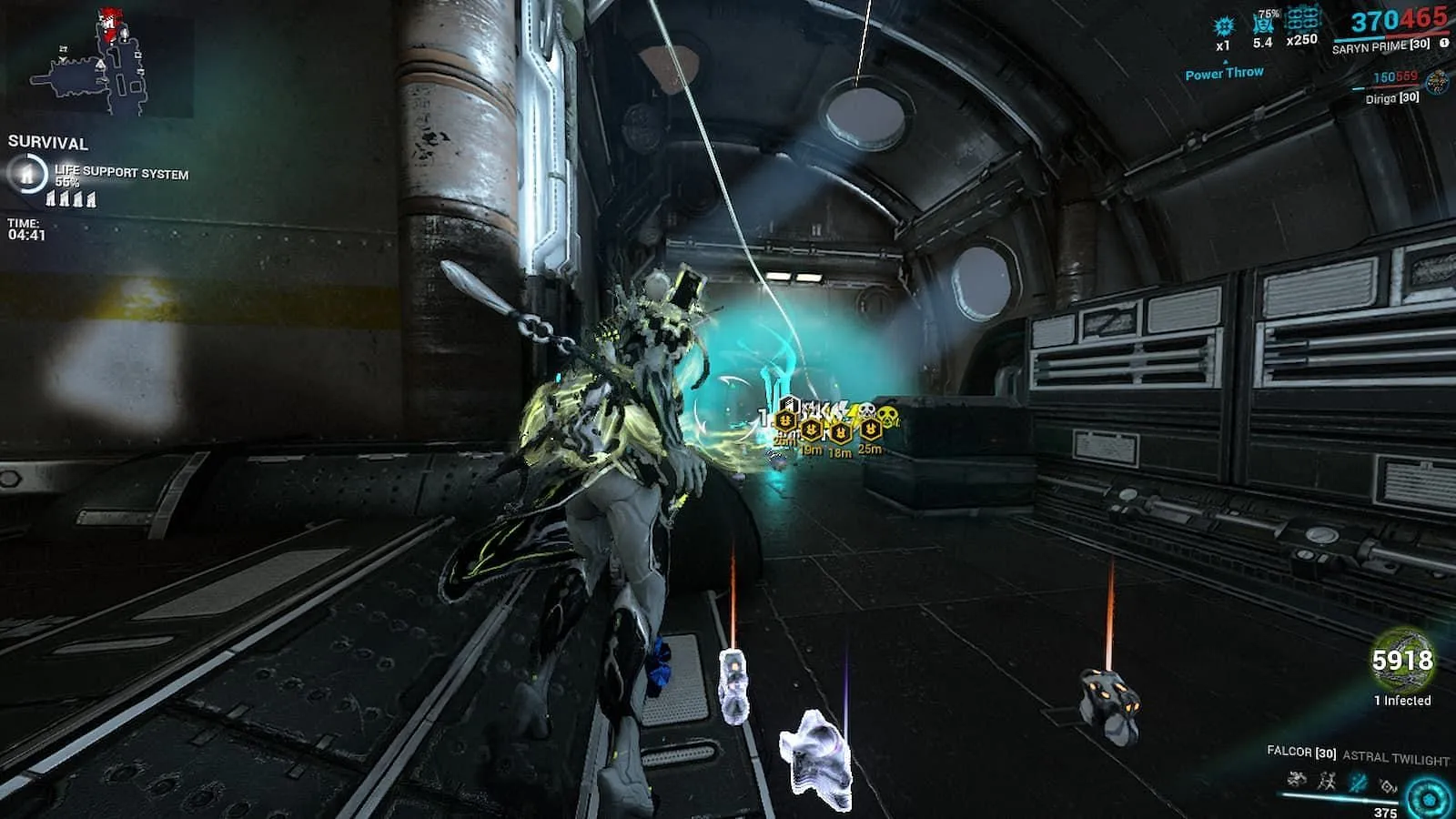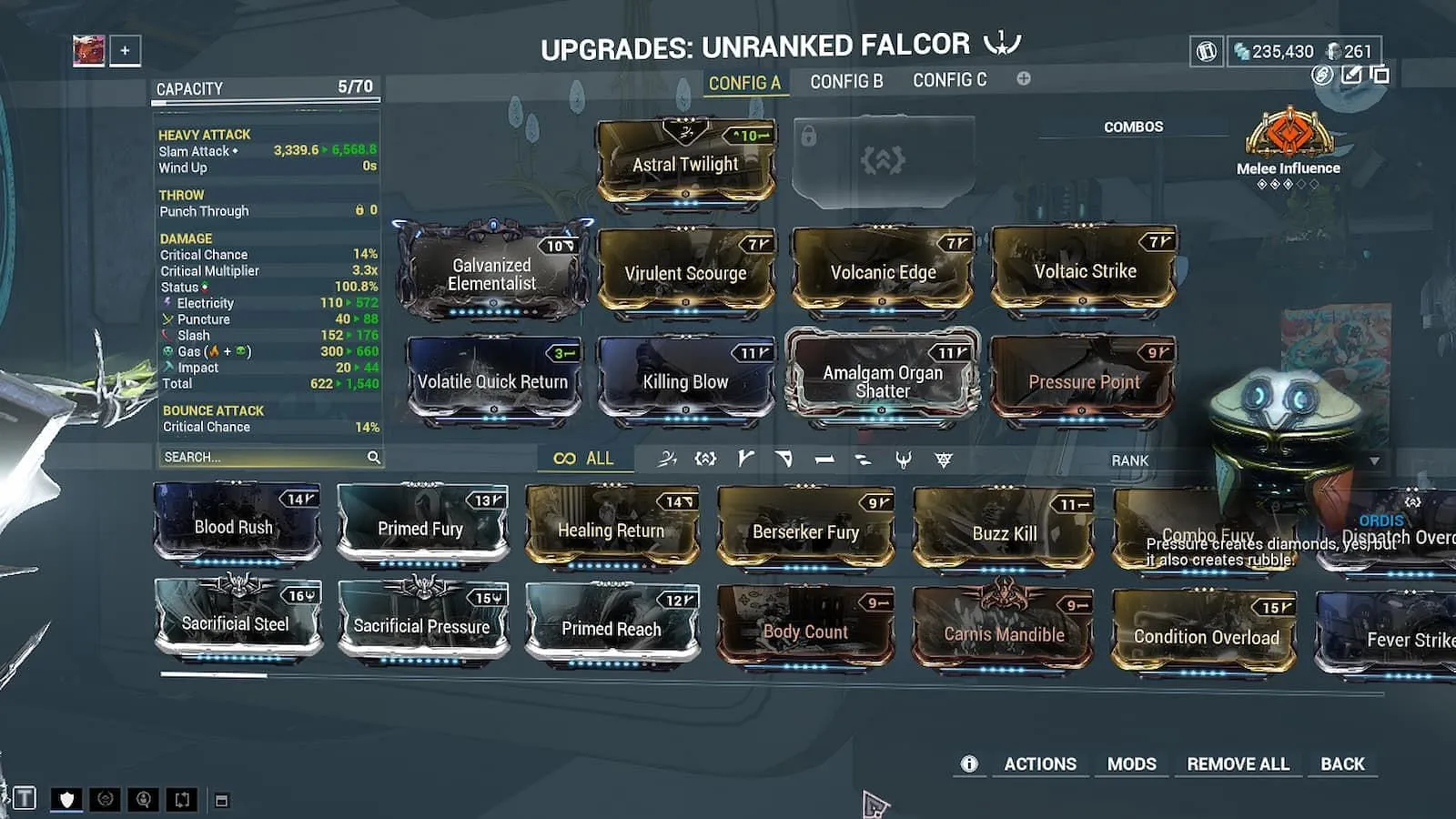Within the expansive universe of Warframe, the Falcor stands out as a compelling weapon acquired from the Energy Lab of your dojo. While it may initially appear to be a downgrade compared to the Xoris from a mathematical standpoint, the Falcor can actually shine in specific build setups, particularly when geared towards area clearing. There are, however, important considerations to keep in mind that will be elaborated on throughout this guide.
Evaluating the Falcor vs. the Xoris in Warframe

In specific scenarios, the Falcor can be a superior choice, particularly if you possess a Riven and are seeking consistent damage output for mob clearing in expansive tilesets. While the Xoris boasts a detonation explosion radius approximately 30% larger and offers enhanced critical stats, it may not always provide the best solution for your needs.
So, what makes the Falcor a viable contender? The weapon features a markedly higher base status chance, which increases its effectiveness in spreading status effects across enemies. Additionally, the Falcor offers several mechanical advantages over the Xoris, including:
- Increased projectile speed
- Longer distance for charged throws
- A guaranteed Electricity proc upon charged throw (even without detonation)
- A homing property for improved targeting
These unique attributes position the Falcor favorably for maximizing Melee Influence, almost as if it’s designed for this purpose. In fact, it can outperform the Xoris in scaling builds rather than traditional heavy attack detonation strategies. This scaling potential is particularly beneficial in the Steel Path, where high enemy density can amplify the effects of status damage, especially Gas damage.
Moreover, one should factor in the performance enhancement provided by Rivens. The Falcor’s high Riven Disposition indicates that securing a strong Riven can significantly elevate its performance when compared to the Xoris. Although it is conceivable to create a high-level Xoris build using Tennokai to maintain your combo, a well-optimized Falcor build offers comparable, if not superior, crowd-clearing capabilities with less upkeep.
Formaless Falcor Build for Warframe

While the Falcor’s design benefits various configurations, one interesting approach is using a formaless setup akin to a detonation-based Glaive Prime. This can be particularly effective if paired with buffs that enhance attack speed (such as Wisp’s green Mote), raw damage (via Eclipse, Vex Armor, or Xata’s Whisper), or faction-specific damage (like Roar). This method can yield impressive kills per minute (KPM) in the Steel Path without the need for a Forma investment or crit chance mods, making it an attractive option.
Recommended Mods:
- Astral Twilight (Stance)
- Galvanized Elementalist
- Virulent Scourge
- Volcanic Edge (for Gas) or Vicious Frost (for Viral)
- Voltaic Strike
- Volatile Quick Return
- Killing Blow
- Amalgam Organ Shatter
- Pressure Point
Arcane Recommended: Melee Influence (minimum Rank 3)
Scaling Falcor Build for the Steel Path
This next build for the Falcor can require anywhere from 5 to 7 Forma, leveraging the latest Galvanized mods to increase overall damage potential. The result? An incredibly powerful Melee Influence Glaive build perfect for the Steel Path.
Essential Mods:
- Astral Twilight (Stance)
- Whirlwind (Exilus)
- Galvanized Elementalist
- Amalgam Organ Shatter
- Primed Pressure Point (or Condition Overload if using a primer)
- Faction-specific Primed Smite mod (maximizes scaling through faction damage; alternatively, use Blood Rush if you’re employing Roar)
- Killing Blow (consider replacing with a Riven for added enhancements)
- Shocking Touch (can be swapped for Focus Energy, depending on polarity)
- Galvanized Reflex
- Galvanized Steel
Arcane Used: Melee Influence
Riven Stats: When looking for a Riven for the Falcor, aim for at least two of the following attributes: +Melee Damage, +Electricity, +Critical Chance, +Critical Damage, and +Status Duration.


